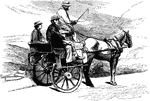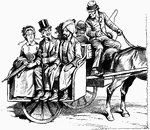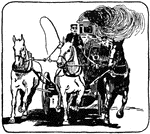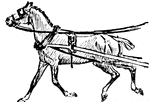Clipart tagged: ‘Horse-drawn’

Double Buggy
An illustration of a double buggy. Referred to as a double buggy because the buggy has two separate…

Chaise
A chaise, sometimes called chay or shay, was a formerly popular, light two- or four-wheeled traveling…

Jaunting Car
The Irish form of the sprung cart, called a jaunting car or jaunty car, was a light, horse-drawn, two-wheeled…

Jaunting Car
An illustration of a jaunting car; The Irish form of the sprung cart, called a jaunting car or jaunty…

Landau
A landau is a coachbuilding term for a type of four-wheeled, convertible carriage. It is lightweight…

Street Car
An illustration of a horse-drawn street car. The first passenger services in the world were started…


